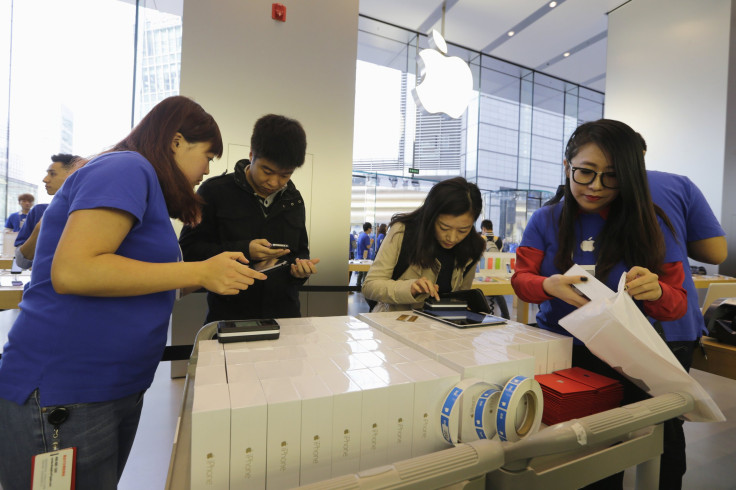Why Apple Is Winning China: Mainland's New Middle-Class Aspirations Include Home, Car, iPhone 6

Apple's recent massive revenue growth in China isn't just the result of larger screen sizes or other advanced features on the iPhone 6 and 6 Plus smartphones. Rather, it's driven in large part by the company’s ability to tap into an aspirational purchasing drive as strong in the People’s Republic’s growing middle class as it is among tech-savvy consumers in U.S. urban enclaves. Just like shoppers in San Francisco and New York, consumers in Beijing and Guangzhou want their status symbols, and a genuine Apple iPhone is high on the list.
That demand has driven soaring sales for Apple, which surged past China’s domestic vendors, including Xiaomi and Huawei, to take the No. 1 spot for smartphone shipments in the country in the fiscal first quarter of 2015, according to research firm Canalys. So what is it Chinese buyers want from Apple?
“The Apple brand is golden in China, and more importantly it’s what we call an aspirational brand,” Tim Bajarin, president of Creative Strategies, said. “People really want it. The second thing that helps drive it is the economic change in China, where you’re getting more people in the middle class.”
China’s burgeoning professional ranks want many of the same things as their American counterparts: a home of their own, a reliable car to drive and, perhaps surprisingly, a really cool smartphone. Real estate is at a premium in China, so many individuals and families choose to rent. Some choose to buy a car, but many instead opt to save their money so they can splurge on lifestyle accessories, including the best available smartphone.
For many Chinese consumers, that’s not just any old phablet, but Apple’s 4.7-inch iPhone 6 or 5.5-inch 6 Plus. Larger smartphones serve a practical purpose in China, with displays conducive to inputting Chinese characters or viewing content on commutes, which can easily last a couple of hours getting from one side of Beijing to the other. But equally important for the Chinese middle class, the smartphone also serves as a status symbol.
“From a more superficial perspective, a large Apple iPhone makes it easier for onlookers to see the social standing of the iPhone user,” Joel Backaler, consultant and author of "China Goes West,” said. “Success in China is often tied to tangible products like home ownership and car ownership -- a brand-name, globally recognized phone like the iPhone fits in this category.”
To access more of those consumers, Apple has stepped up its physical presence in China. Five stores are expected to open by Chinese New Year on Feb. 19. The company plans to have 40 retail stores in the country by mid-2016. Apple has reportedly also been recruiting U.S. employees to make the move to China to support its retail efforts, according to 9to5Mac.
Beyond retail, Apple has explored other avenues to expand its reach in China, including a rumored partnership with e-commerce giant Alibaba to bring its mobile payment service, Apple Pay, to the country.
Apple’s focus on Asia is paying off. Of the company’s $74.6 billion in fiscal Q1 revenues, Greater China, an operating segment that Apple defines as mainland China, Taiwan and Hong Kong, accounted for $16.1 billion, or 21.6 percent. That’s a 70 percent increase from $9.5 billion in the same period a year ago. With Chinese New Year -- when employees typically get a year-end bonus -- around the corner, Apple is expected to get another boost in the world’s most populous country. “I have to believe the momentum will continue,” Bajarin said.
© Copyright IBTimes 2024. All rights reserved.












